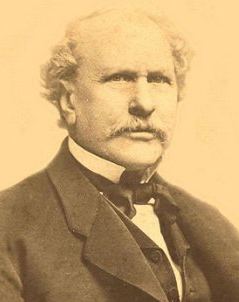Nationality American Occupation Architect | Name George Frederick Role Architect | |
 | ||
Projects Repairs to the Maryland State House; Architect to the Baltimore Parks Commission, 1863-1895; 1893 Maryland Exposition Building, Chicago World's Fair Died August 17, 1924, Balti, Maryland, United States Structures Balti City Hall, Cylburn Arboretum, Maryland State House | ||
George Aloysius Frederick (December 16, 1842 – August 17, 1924) was a German-American architect with a practice in Baltimore, Maryland, where his most prominent commission was the Baltimore City Hall (1867–75), awarded him when he was only twenty-one.
He had apprenticed with a Baltimore architectural partnership of Lind & Murdoch, architects of the Peabody Institute. He designed structures for Baltimore's Druid Hill Park, purchased for the city in 1860, and designed by Howard Daniels, Baltimore Park Commissioners' landscape designer and John H.B. Latrobe, who designed the gateways to the park and the alterations made to the early-19th century Nicholas Rogers mansion that already stood in the site. Druid Hill Park ranks with Central Park in New York, begun in 1859, and Fairmount Park in Philadelphia as the oldest landscaped public parks in the United States. Among Frederick's playful structures for Druid Hill in Moorish and Chinese styles is the Chinese Station erected in 1864 and the Moorish Station, which were stops on a narrow-gauge railroad that once wound through the park.
The commission for the Baltimore City Hall was awarded after a design competition to Frederick, a complete unknown and not quite twenty, in the fateful year 1860. The Civil War intervened, and construction finally got under way in 1867. Frederick's design looked to the new additions to the Palais du Louvre, completed under Hector Lefuel in 1857, and well publicized to professionals and architects alike through engravings, lithographs and description; its high Mansard roofs, bold corner pavilions, richly framed dormers are reflected in Frederick's City Hall, above which rises the central dome, 227 feet (69 m) high, above an interior rotunda 119 feet (36 m) high. Twin interior courts provided every room with natural light.
Well launched by the City Hall, which influenced the design of every ambitious commercial building in Baltimore for more than a decade, Frederick went on to design the premises of the major German-American newspaper The German Correspondent, completed in 1869 on a prominent corner lot on Baltimore Avenue; it had three main floors and an attic behind French mansards, with a marble-clad facing with Venetian-Gothic windows. The German Orphan Asylum (1873) was another German-American commission.
In 1868 Frederick was a founder of the Baltimore chapter of the American Institute of Architects.
